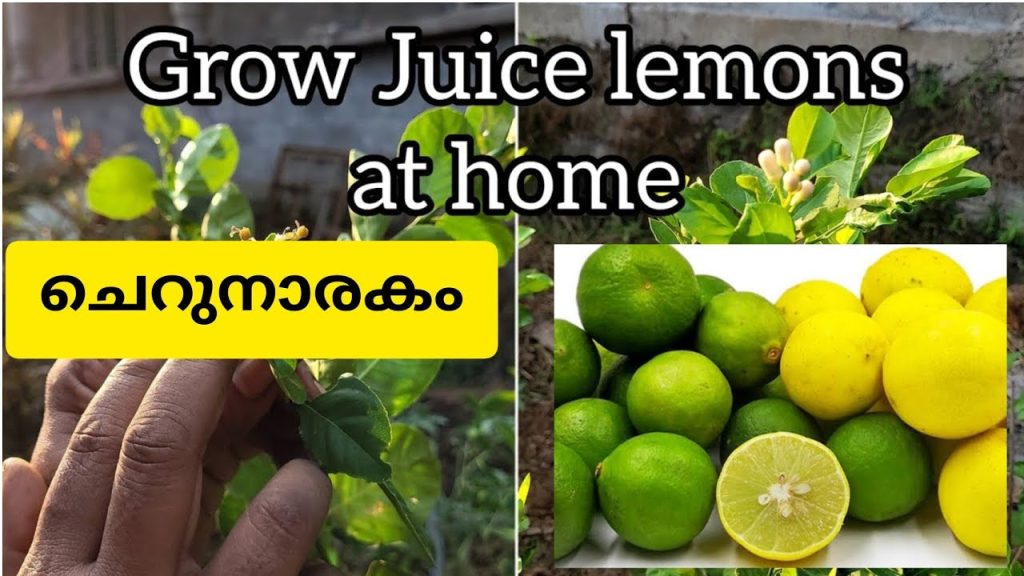
ചെറുനാരകം വളർത്തുമ്പോൾ ശ്രദ്ധിക്കേണ്ട കാര്യങ്ങൾ എന്തൊക്കെയാണ് വളരെ എളുപ്പത്തിൽ നമുക്ക് ചെറുനാരകം വളർത്തിയെടുക്കാൻ സാധിക്കും Easy Lemon Farming Tips
ചെറുനാരകം വളർത്തുമ്പോൾ ശ്രദ്ധിക്കേണ്ട കാര്യങ്ങൾ എന്തൊക്കെയാണ് വളരെ എളുപ്പത്തിൽ നമുക്ക് ചെറുനാരകം വളർത്തിയെടുക്കാൻ സാധിക്കും ഇത് നമുക്ക് ഉണ്ടാക്കിയെടുക്കുന്നതിനായിട്ട് വളരെ എളുപ്പത്തിൽ തന്നെ നമുക്ക് വിത്ത് നട്ടു കൊടുക്കാൻ വിട്ടു നടുന്നതിന് മുൻപ് നമുക്ക് സുഡോ മോണോസ്സിൽ കുറച്ചുനേരം കഴിഞ്ഞതിനു ശേഷം നമുക്ക് ചെയ്യാൻ പറ്റുന്ന ഒന്നാണത് ഇതിനായിട്ട് നമുക്ക് വിത്ത് നന്നായിട്ടു ഒന്ന് പാകപ്പെടുത്തി

എടുത്തതിന് ശേഷം ഒരു ചട്ടിയിലോ അല്ലെങ്കിൽ നമുക്ക് മണ്ണിൽ നല്ലപോലെ മിക്സ് അതായത് ചാണകപ്പൊടി എല്ലുപൊടി അതുപോലെതന്നെ മറ്റു വളങ്ങളെല്ലാം ചേർത്തു കൊടുത്തു നന്നായിട്ട് മിക്സ് ചെയ്ത് യോജിപ്പിച്ച് കടലിൽ പിണ്ണാക്കും ചേർത്ത് ആവശ്യത്തിന് വെള്ളം ഒഴിച്ച് മിക്സ് ചെയ്ത് യോജിപ്പിച്ചതിനുശേഷം ഇതിലേക്ക് നമുക്ക് നാരകത്തിന്റെ വിത്ത് ചേർത്തുകൊടുത്ത
നന്നായിട്ട് വളർത്തിയെടുക്കാവുന്നതാണ് വളരെ എളുപ്പത്തിൽ ചെയ്തെടുക്കാൻ പറ്റുന്ന ഒന്നാണ് തയ്യാറാക്കുന്ന വിധം കൊടുത്തിട്ടുണ്ട് വീഡിയോ നിങ്ങൾക്ക് ഇഷ്ടമായാൽ സബ്സ്ക്രൈബ് ചെയ്യാനും ഷെയർ ചെയ്യാനും മറക്കരുത്.
1. Climate & Location
- Best climate: Subtropical and tropical regions
- Temperature range: 25–35°C (ideal)
- Frost sensitive: Protect from cold and heavy winds
- Sunlight: Full sun (6–8 hours daily)
🌱 2. Soil Requirements
- Type: Well-drained loamy or sandy loam
- pH: 5.5 to 7.5
- Avoid waterlogged or saline soils
- Add compost or organic matter before planting
🌳 3. Variety Selection (Common Indian Varieties):
- Eureka
- Kagzi lime (acid lime)
- Pramalini
- Sai Sarbati
- Nepali oblong
🪴 4. Planting Guidelines
- Spacing: 5m × 5m (for large scale), 2m × 2m (for high-density)
- Pit size: 2 ft × 2 ft × 2 ft
- Filling: Mix topsoil with 10–15 kg FYM (cow dung), neem cake, and a handful of super phosphate
🕓 Best time to plant: June–August (monsoon) or Feb–March (with irrigation)
💧 5. Irrigation Tips
- Young plants: Every 5–7 days
- Mature trees: Every 10–15 days (less in winter)
- Use drip irrigation for efficiency and water saving
- Avoid overwatering (causes root rot)
🧪 6. Fertilizer Schedule (Per Tree/Year)
| Age | FYM | N | P | K |
|---|---|---|---|---|
| 1st year | 10 kg | 200g | 100g | 100g |
| 3rd year | 20 kg | 400g | 200g | 200g |
| 5+ years | 30–40 kg | 600–800g | 300–400g | 300–400g |
🧴 Apply in 2–3 splits: pre-monsoon, post-monsoon, flowering stage
🪱 Add vermicompost, bone meal, and neem cake for organic boost
🌸 7. Flowering & Fruit Set Tips
- Spray 0.5% Zinc Sulfate + 0.2% Boron during flowering
- Use Planofix (NAA) or seaweed extract to reduce flower/fruit drop
- Prune dry and weak branches after harvest to encourage new growth
🐛 8. Pest & Disease Control
| Problem | Solution |
|---|---|
| Leaf miner, aphids, citrus psylla | Neem oil, soap spray, or imidacloprid (if needed) |
| Citrus canker | Spray copper oxychloride or Bordeaux mix |
| Root rot | Avoid overwatering, treat soil with Trichoderma |
🧺 9. Harvesting
- Starts from 3rd year onwards
- Fruits are ready 150–180 days after flowering
- Harvest when fruits turn yellow-green and firm
📦 10. Post-Harvest & Marketing
- Store in cool, dry place (short shelf life)
- Can be sold fresh or processed (juice, pickles, dried lemon)
- Target local markets, juice industries, or export (if large scale)
🌿 Bonus Tips:
- Mulch base with dry leaves or straw to retain moisture and suppress weeds
- Keep tree basin weed-free
- Intercrop with legumes (like green gram) in early years for extra income
